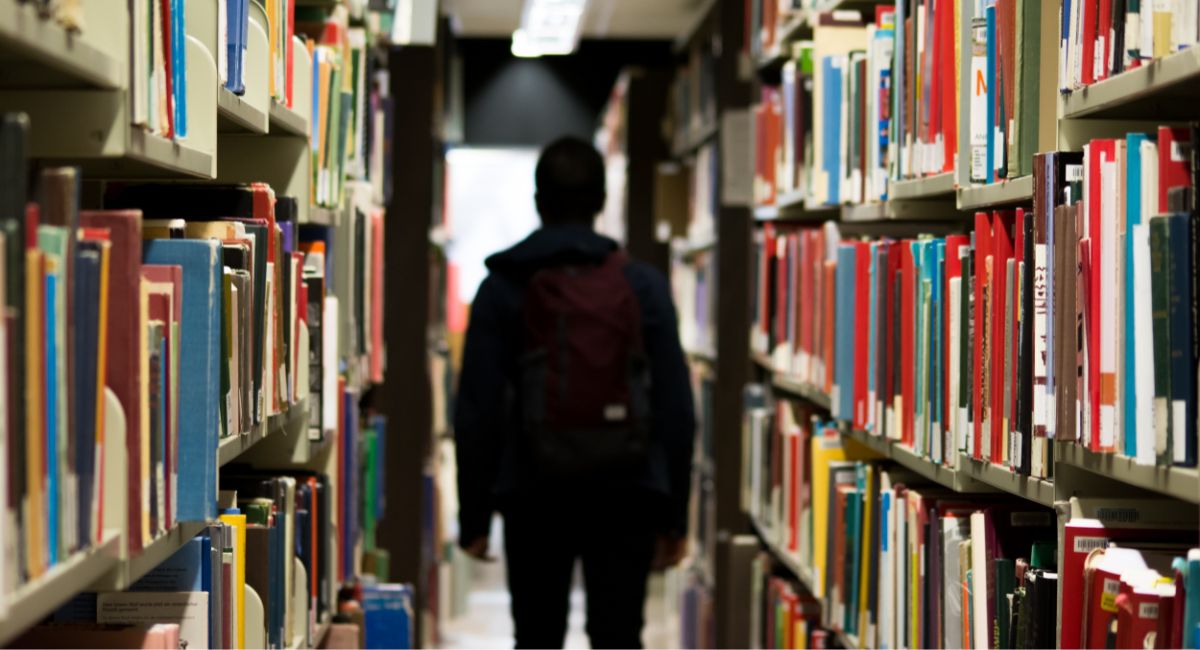Take a peek into the library at Burlingame High School, located on the northern edge of Silicon Valley, and you’ll find students doing schoolwork on their computers, talking with friends, playing chess, or checking in with their college and career advisors.
No one is reading a book.
According to school records, around 50 books were checked out by students in the fall semester. In response, the administration has decided to take a different approach to the building, rebranding it as a student union, a communal space for students to interact and complete schoolwork.
As part of this transition, the school moved the College and Career Center into the library last year. This year, the school is removing books that have not been checked out for over a decade.
While school officials say the change is meant to cater to current student needs and interests, it also feels like a capitulation to the fact that students of my generation simply don’t read as much anymore, or at least they’re not reading books.
A recent survey found that nearly 50% of American adults read zero books in 2023. Another survey by Gallup in 2022 found a similar decline in reading among young adults though not as severe as older age groups.
“I don’t really read any books outside of what’s assigned in my English class,” says student Dora Yang, adding, “I feel like many high schoolers don’t have that extra free time to read for enjoyment.”
And Yang isn’t alone. Burlingame High School Librarian Rebecca Velasco says she’s only seen “about ten students” check a book out since January 2024.
“The numbers are pretty low. We have gone through our books and gotten rid of the books that kids just weren’t checking out or are severely outdated. I could probably count on both hands the kids that came to check out books just for reading on their own time,” Velasco said.
All of this is happening as, across the country, states are fighting over what books students should or shouldn’t read. According to PEN America, 1,477 individual books were banned, affecting 874 unique titles, in the 2022-2023 school year. Bans were most prevalent in Texas, Florida, Missouri, Utah, and South Carolina.
And yet, I’m not sure anyone would even notice if a book were banned at my school. Most students seem to spend their time surfing social media instead of diving into a novel. Revamping the library, basically stripping it of its books, would simply reinforce this trend.
“I think with Google being so prominent now, kids don’t come into the library to do research anymore because your research is essentially at your fingertips,” Velasco explained. But, she continued, “I still think it is crucial and super important to get kids in here, even if it’s just checking out novels and books on their own. The benefit of a physical book is huge, and we need to keep that going.”
Velasco is part of a shrinking number of trained school librarians nationally and in California where, according to the data, there is only one trained teacher librarian for every 9,667 students, well below the recommended ratio of 1 per 785 students.
And, according to the California Department of Education’s own findings, schools with a robust library program tend to outperform schools without such resources. Beyond providing access to books, libraries are places where students can learn to find information from a variety of sources, they can learn to evaluate the credibility of those sources, and they can hone their critical thinking skills as they grapple with conflicting ideas and information.
All of these are crucial skills for young people as society becomes more inundated by a flood of digital media, much of it unreliable and shaped by algorithms designed to deliver content catered to an individual’s personal interests. The ability to discover something new and unexpected that often comes through books is quickly vanishing.
For me personally, books have been more than just sources of information; they have been companions, mentors, and windows into worlds beyond my own. There’s something inherently intimate and immersive about holding a physical book, turning its pages, and allowing yourself to be transported into its narrative world. It’s an experience that digital content, no matter how convenient, simply cannot replicate.
An alternative to library conversions or closures can be seen at nearby Palo Alto High School, where officials have created more avenues that promote the use of library resources, including its books. These include tutoring programs or programs to promote reading. Adding resources like student ambassadors and opportunities for librarians to teach students about research methods and credible sources allows students to learn important real-world skills while also helping them reconnect with books.
Introducing a wider variety of literary options – rather than imposing bans and limiting student choice – and expanding the number of languages available might also help draw students back into the library and rekindle their love of reading.
Doing away with our library will rob students here of all the potential for positive change and growth that even just one book contains. Let’s at least try to give them that opportunity before we throw in the towel. Let’s not give up on reading yet.
Jeannine Chiang is an aspiring journalist and a junior at Burlingame High School in Burlingame, California where she is a reporter for the school paper, The Burlingame B.




